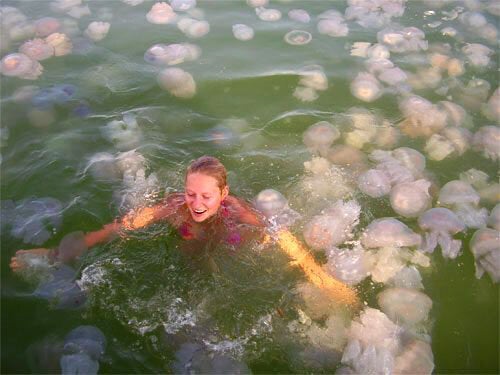
Two days ago I heard a blood-curdling scream from my twelve-year-old who was swimming twenty feet away from me in a large salt water tidal pond. What could possibly have happened? Seconds before she was laughing and splashing with her friend. Now she was crying with a huge red welt on her leg. It was a nasty jellyfish sting.
Hundreds of red stinging jellyfish have just shown up around Martha's Vineyard and the Cape like never seen before. Today the swimmers stayed on shore, the waterskiers stayed home and everyone was discussing the jellyfish population explosion. Then the front page of Sunday's New York Times provided an explanation.
The jellyfish explosion is worldwide. Scientists blame a number of factors including overfishing, but most importantly a rise in seawater temperature caused by global warming. "The warmer seas and drier climate caused by global warming work to the jellyfish's advantage, since nearly all jellyfish breed better and faster in warmer waters," the Times reported. The article describes a scene a few weeks ago on a typical warm summer day in Spain, when -- in a period of hours -- over three hundred people on Barcelona's beaches were treated for stings. Talk about the climate crises hitting home.
Back at the pond my daughter's friend felt the effects of global warming herself not eight minutes later. She cried too.
